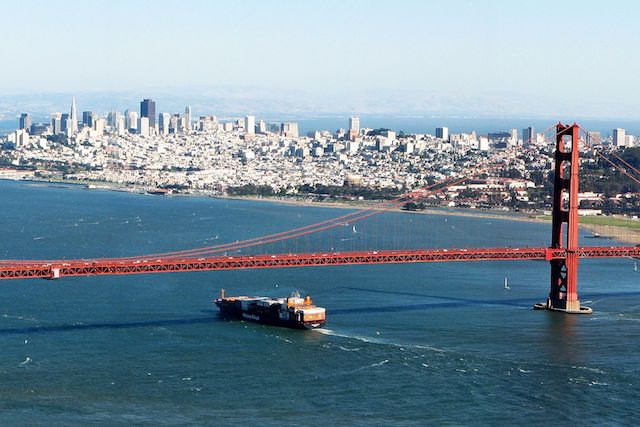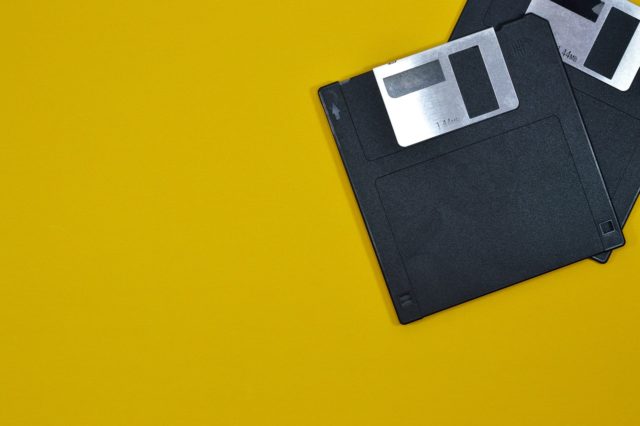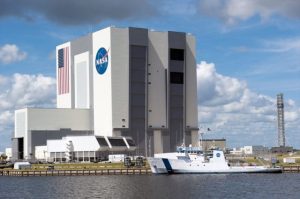10 Vintage Things Still Running as They Did in the Past
They say you can’t live in the past. But can you really? Today is already tomorrow’s past, and how we view that passage of time is all in the lens we choose to look through. It’s fascinating to think about how time shapes our lives. Yet, despite the relentless march forward, there are people, places, and even entire organizations that have mastered the art of holding on to the past. These aren’t just nostalgic wanderers; they are steadfast in their ways, refusing to change no matter how much the world around them evolves.
In a world constantly driven by innovation and advancement, this adherence to tradition can seem out of place. But for those who resist the pull of modernity, their chosen way of doing things has become a symbol of stability, authenticity, and even rebellion.
From ancient methods of craftsmanship to businesses built on old-school techniques, these entities challenge the common notion that progress always equals improvement. Some things simply cannot be rushed. They prove that there’s a timeless value in staying true to an original formula, no matter how many years pass.
10. The San Francisco Subway Still Runs on 5 ¼” Floppy Disks in 2024

Public transportation in major cities is often a complex web of logistics, technology, and human collaboration. Cities like San Francisco, with a population exceeding 800,000, rely on their subway systems to handle the rush of over 80 million passengers every year. Yet, when it comes to the coordination and control of this massive system, one might be surprised to find that some of its core operations are still running on 1980s technology—5 ¼” floppy disks.
Yes, you read that right. Despite opening a brand-new state-of-the-art subway line stretching 1.6 miles and costing a whopping $1.6 billion, the control system for their Market Street subway is powered by floppy disks. These outdated relics of the Reagan era are still being used to organize and manage the schedules, routes, and overall timing of one of the busiest transit systems in the world.
While discussions for system upgrades have been ongoing, the retro technology still serves its purpose. However, it’s a reminder of how sometimes legacy systems can persist far beyond their expiration dates, forcing cities to balance between modern innovation and budget constraints. Until a more modern solution, like CD-ROMs (yes, that’s the proposed next step), replaces them, the floppy disks will continue their improbable service.
9. The IRS Runs on 60-Year-Old Code—And It’s Still Going

Have you ever thought about how outdated the IRS seems when you’re filling out your taxes? After all, the IRS already knows how much you make and what you owe, so why are you spending your time on paperwork? Well, maybe that’s just as well, considering that their computers are still running software that’s decades old, some of it dating back to the 1960s.
In 2020, the IRS spent an eye-popping $2.8 billion just to maintain and update its aging IT infrastructure. But no matter how much money they pour in, the Individual Master File system—the backbone of their taxpayer data—still operates on code from an era when computers were the size of rooms, and data was stored on magnetic tape.
If the system were to crash, it could disrupt the tax records of over 100 million Americans. While there are plans to update the software, they’re moving at a snail’s pace. One system upgrade that was supposed to roll out in 2014 didn’t actually get finished until 2023, and the full overhaul of the system isn’t expected until 2030.
Will the IRS manage to modernize in time? Or will the entire tax infrastructure fall apart, leaving us in a dystopian nightmare where tax codes are as incomprehensible as ever? Only time will tell.
8. Peru’s 150-Year-Old Hospital Ship Still Sailing for Health

Progress often gets a mixed reaction—especially when it comes to medicine. While some people rush to get the latest phone or gadget, others prefer ancient methods, like healing with herbs or age-old remedies. If you’re one of those who appreciates old-school healthcare, Peru might be your destination.
Here, they still use a hospital ship that’s over 150 years old. Welcome to the BAP Puno, once known as the Yavari, which cruises the waters of Lake Titicaca—the largest, and arguably most amusingly named, lake in South America. And as if that weren’t enough, this historic vessel runs on a steam engine fueled by llama dung.
Originally commissioned by the Peruvian Navy in 1861, the ship’s life has been anything but ordinary. It was first a British gunship, then a museum, and now it serves as a hospital vessel. The BAP Puno, along with its sister ship, was assembled in England, then disassembled, shipped to Peru, and transported by mules over 200 miles before finally being reassembled on the shores of the lake.
Today, locals around Lake Titicaca still rely on this floating relic for medical services, keeping history alive while embracing its practical, if unconventional, use. 150 years later, it’s a perfect blend of old and new, offering care to those who need it most.
7. Unbelievable! McLaren Still Uses a Laptop from the Early ’90s for F1 Servicing

Are you a enthusiast of luxurious and rare sports cars? McLaren is surely a brand that can catch your attention. Their latest McLaren 750S, for example, comes with a steep price tag of around $324,000. But hold on, if you’re a die-hard fan of the classic cars, then the McLaren F1 might be the one you’d truly love to know more about.
The McLaren F1 had its heyday in the 1990s. Throughout most of that decade, these amazing cars were being produced. However, the production numbers were quite limited. In total, only 106 McLaren F1s were made, and out of those, just 72 were produced as road cars. The production of this iconic car came to an end in 1998.
Now, here’s where things get really interesting. Even though these cars were last made over 20 years ago, McLaren still offers service for them. And that’s where the truly incredible part comes in. Since the technology used in these cars is so old-fashioned, McLaren relies on a rather ancient laptop to service your precious McLaren F1 if there’s a need.
Can you guess what kind of laptop it is? It’s the Compaq LTE 5280! This laptop uses a DOS program to keep these multi-million dollar relics running smoothly. Imagine a modern-day service center, with state-of-the-art equipment everywhere, but when it comes to these special McLaren F1s, they turn to this old laptop to do the job. It’s really a testament to the uniqueness and the long-lasting legacy of the McLaren F1.
What makes this even more remarkable is the fact that this laptop has managed to stay operational all these years. It’s like a little time capsule of technology, still fulfilling its purpose in the most unexpected way. It really makes you stop and think about how some things, even with their age, can still be incredibly useful and relevant.
And it’s not just about the laptop itself. It’s also a reminder of the craftsmanship and the engineering that went into the McLaren F1. These cars were built to last, and they still are. The fact that they can be serviced with such an old laptop only adds to their charm and allure.
6. The US Nuclear Arsenal Was Run on Floppy Disks Until 2019

It’s one thing to learn about outdated technology in museums or history books, but it’s another to discover that critical systems—like the United States’ nuclear arsenal—ran on floppy disks… until 2019.
Yes, you read that correctly. Up until 2019, the 5,244 nuclear warheads in the U.S. were controlled by floppy disks, and not just any floppies, but the 8-inch disks from the 1970s. For a quick throwback, these were the floppy disks that resembled mini vinyl record cases. Imagine the sheer vintage tech behind the nuclear weapons system!
Before the update, the entire system was a giant wall of computers that looked like something straight out of Star Trek: The Original Series. These computers were connected to the IBM Series 1, a machine that first launched in 1976. An audit in 2016 revealed that this system was responsible for coordinating all the operational functions of U.S. nuclear forces, including intercontinental ballistic missiles, nuclear bombers, and support aircraft. The old-school tech was still in charge of the world’s most dangerous weapons.
But wait, it gets more absurd. In 2014, a report revealed that three separate nuclear bases had to share one single specialized wrench for placing or removing nuclear warheads. Yes, you heard right—a single wrench for three bases.
It’s one thing to be nostalgic about classic tech—it’s another to trust it with the fate of the world. Fortunately, in 2019, the system was finally updated. But for decades, the world’s nuclear arsenal was literally run on floppy disks. Talk about old tech running the show!
5. Boeing 737 Planes Run on 16-bit Processors From the ’90s

The Boeing 737 Max has earned an infamous spot in aviation history, with headlines like “If it’s Boeing, are you going?” after two devastating crashes, leading to tragic losses. Yet, even amid the outcry, there’s one mind-boggling detail that gets overlooked—the computers inside these planes are powered by 16-bit processors from the 1990s.
Yes, you read that right. While the 737 Max is packed with state-of-the-art technology, including NASA-designed systems and cutting-edge carbon fiber parts, its computer systems are still running on ancient tech. The plane uses the FCC-730 series, which is essentially a 16-bit processor that could have been lifted right out of a Super Nintendo console.
Despite the Max’s notorious crashes, Boeing stubbornly held onto these dated computers. Instead of upgrading the hardware, they simply piled more software onto an already creaky system. This reckless patchwork led to even more grounded planes, as the outdated processors couldn’t handle the growing demands of modern aviation tech.
Introduced in 1996, these processors weren’t exactly cutting-edge when they hit the market. Even back then, 16-bit processors were considered low-powered, far from the more advanced chips available at the time. Boeing did release several updates to the software, but hardware upgrades remain a mystery even as we step into 2024.
4. The Surprising Truth: Space Station Computers Are From the ’80s

Hey there, space enthusiasts! You know those super-advanced computers we see on shows like Star Trek, where they seem almost alive? That’s the kind of tech we might expect in the 24th century, right? But here’s the kicker – in this 21st century, the computers on some spacecraft are from the 1990s. And get this, the International Space Station (ISS) is running on an Intel 80286SX CPU from the 1980s!
Now, before you start thinking NASA is a bit behind the times, let me explain. It’s not like they don’t know about the latest and greatest. There’s a really good reason for this choice. You see, while those old processors might seem slow compared to what we have today, they’re actually super reliable. In space, radiation is a big problem. And here’s the interesting part – the faster a computer processor is, the more likely it is to get damaged by radiation. So, these slower processors are actually better suited for space work because they can handle the radiation better.
It’s like a balancing act. You want a computer that has enough processing power to do the job, but you also don’t want it to get fried by the harsh space environment. It’s all about finding that sweet spot.
Now, let’s talk about the challenges. Upgrading these old systems is no walk in the park. Finding compatible hardware or software is like looking for a needle in a haystack. Since so few people write software for this kind of old tech anymore, it’s really tough to keep things up to date.
And you know what? Planning space missions takes years. By the time all the hardware and software get to space, they’re already a bit outdated. And by the time they’ve served their purpose, they’re really, really out of date. But hey, as long as they keep working and help us explore the wonders of space, that’s all that matters, right?
3. 170,000 Small Planes Still Run on Leaded Fuel

Remember when you had the choice between leaded and unleaded gasoline at the pump? These days, unless you’re driving a diesel or electric vehicle, you’re fueling up with unleaded, a move that’s far better for the environment. Leaded gasoline was phased out in the 1980s and fully banned by 1996. But here’s the twist: leaded fuel hasn’t disappeared entirely—it’s still running through the engines of around 170,000 small aircraft.
In 2023, the EPA acknowledged a shocking reality: lead pollution from airplanes is a serious health risk for anyone near airfields, where these small planes are constantly taking off and landing. The fuel, which contains a dangerous neurotoxin, is precisely why we banned it from cars decades ago. Yet, the aviation industry somehow slipped through the cracks.
It’s an obvious hazard, yet these small planes—vital for emergency services, medical flights, and other critical operations—can’t run on any other fuel. And despite the obvious health risks, we’re still waiting for a viable solution after 25 years of knowing the dangers.
While it seems hard to believe that this outdated, dangerous practice is still going strong, the world of small aircraft is stuck in the past, and for now, there’s little else that can be done.
2. The SS Badger: The Only Coal-Burning Vessel Still Operating in the US

As the auto industry accelerates toward electric cars and renewable energy gains momentum in powering everything from homes to businesses, there’s one holdout from a bygone era still sailing the waters: the SS Badger. This remarkable vessel is the last remaining coal-burning ship in the United States.
Operating across Lake Michigan between Michigan and Wisconsin, the SS Badger is more than just a ferry—it’s a National Historic Landmark. Since 1953, it’s ferried passengers and their cars, but this isn’t your average modern transport. The ship, burning coal to power its engines, is a living relic of a time when industrial technology had a far less sustainable focus.
In 2022, after years of coal-powered operations, the ship’s owners acknowledged the environmental drawbacks of clinging to such outdated practices. They’ve expressed interest in converting the ship to a more sustainable energy source. However, while the intention is there, no clear plans have been laid out, and it’s unclear when or even how the SS Badger will transition away from coal.
For now, it remains an anachronism on the water, a floating reminder of how far we’ve come—and how far we still have to go—in moving toward a greener future.
1. Boeing 747s in Service That Pre-Date the Moon Landing

The Boeing 747, a classic icon of air travel, often brings to mind images of jet-setting around the globe in comfort and style. However, here’s a mind-blowing fact: some Boeing 747s still in service today were built before man even stepped foot on the moon.
On July 20, 1969, humanity made its historic leap onto the moon. But just a few days earlier, on July 13, 1969, a Boeing 747 had already taken its first flight—decades before the iconic lunar landing. This particular aircraft is still in operation today, currently serving Caspian Airlines based in Tehran, Iran.
While most 747s have been retired or stored away, with the global shift to newer, more fuel-efficient models, a handful of these giants are still flying. Caspian Airlines continues to operate the oldest known 747 still in active service, making it not just a relic of the Jet Age but a living piece of aviation history.

























